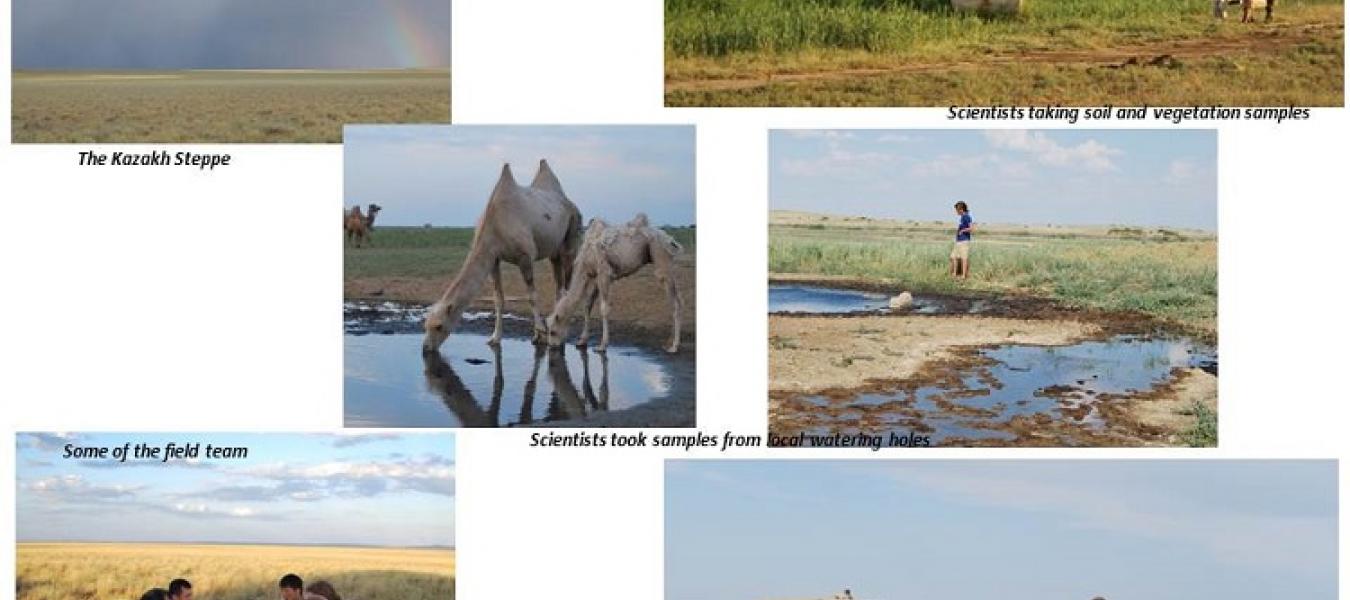
Latest News on Saiga Antelope Mass Mortalities
Saiga Research Expedition
On 27th June 2015, a 12-day expedition was launched to investigate the reasons for the mass die-off of Saiga antelopes in May 2015. (On 5 June the official death toll stood at 134,000 saigas).
The main goal of this field mission was to follow the migration routes taken by saiga antelope this spring and take samples of the environmental components; water, soil, and vegetation, which may have all potentially affected the saigas, as well as investigating possible links with deaths of domestic animals and speaking to local people.
A team of specialists conducted the expedition to the Kyzylorda, Karaganda, Aktobe, Kostanay and Akmola regions, covering over 4000km of the Kazakh steppe, and comprised veterinarians, ecologists, zoologists, botanists and geoecologists. This interdisciplinary team will ensure a thorough analysis of all the relevant environmental components in the saiga's habitat.
Vegetation may not play a crucial part in the die-off
Botanists conducted investigations into vegetation along the saiga's migration routes and especially around the die-off locations. Initial results indicate that the various die-off sites, which are located quite far from each other, differ significantly. Other species of fauna show no unusual level of mortality in these areas.
This early finding may indicate that vegetation did not play a crucial role in the die-off, however, the full reports will reveal further details. In order to identify any infectious diseases veterinarians took blood samples from domestic livestock. Notably, health problems with domestic animals always differ in their symptoms from what has been observed in the wild. Our scientists also caught some insects, especially ticks, which have been sent for analysis.
During the course of the fieldwork, half of a metal sphere was found, this seems to be the same type of sphere found at another Kazakh saiga die-off site in May 2015. Although those are probably remnants of rocket engines, a link to the die-off is very unlikely. All data and samples are now being analysed in laboratories for any kind of toxins, heavy metals, and remnants of the rocket fuel heptyl. The conclusion of the expedition will be published at a later stage and be fed into the overall analysis of the mass die-off of saiga antelopes which occurred in May 2015.
Small herds of saigas
The expedition also observed living saigas in various locations, albeit in small groups. The biggest herd was about 30 animals strong. Some calves have managed to survive, even without their mothers. This may be due to their proximity to a water source and fresh vegetation, which they can survive on from soon after they are born.
The expedition was implemented by the Association for the Conservation of Biodiversity of Kazakhstan, Research Institute for Biological Safety Problems Kazakhstan, Royal Veterinary College London, the Saiga Conservation Alliance and Imperial College London. It is funded by the Ministry of Agriculture of the Republic of Kazakhstan and international partners of the Altyn Dala Conservation Initiative - the Frankfurt Zoological Society and The Royal Society for the Protection of Birds - with substantial support by The People's Trust for Endangered Species, the Veterinary College London, and the Wildlife Conservation Network.
